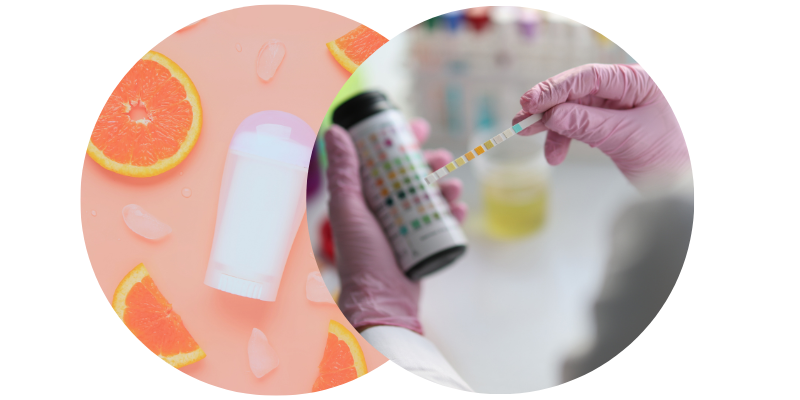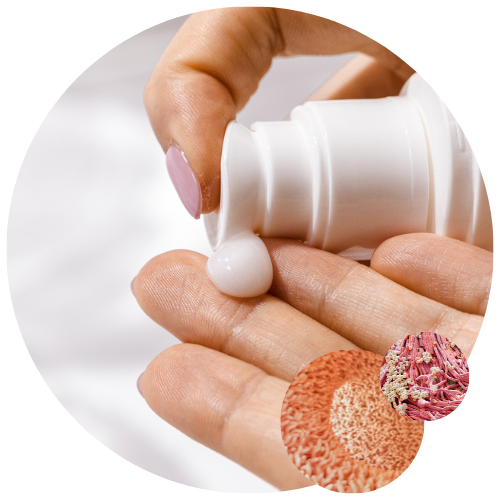The skin microbiota plays a vital role in maintaining the skin's integrity and functionality. It contributes to the proper regulation of organisms and organs, allowing the skin to perform its essential functions, including acting as a barrier. See our latest article "Why preservce the skin microbiota ?"
However, for various reasons, the skin microbiota can deteriorate, lose its properties, and lead to or exacerbate skin conditions.This vulnerability is explained by the numerous intrinsic and extrinsic factors that shape or affect its composition.
How to preserve the health of the skin microbiota? What are the products and good practices used to take care of it and avoid its degradation? What is the impact of pre- and post-biotics on the skin microbiota (when applied topically or in nutricosmetics)?
Good practices to preserve the skin microbiota
Many factors can affect the skin microbiota’s equilibrium.
Preserving the health of your skin microbiota involves several good practices, including:
The impact of skincare and nutricosmetics on the skin microbiota
The presence of skin microbiota plays a key role in one’s characteristic smell and affects the skincare products’ perfume and texture. However, these cosmetic products can significantly impact the skin microbiota’s balance. Factors such as their pH and ingredient composition, including preservatives, antimicrobial agents, or alcohol, can be detrimental to the hydrolipidic skin biofilm and the skin microbiota.

Cosmetic and nutricosmetic industries are aware of this issue and are developing new product lines that are more skin-friendly. The next-generation skincare products aim to preserve the balance of the skin microbiota or correct existing imbalances. They are formulated with active ingredients that are more microbiota and skin-friendly. In recent years, the addition of pre- and post-biotic compounds has also gained popularity.
Use of prebiotics, probiotics, and postbiotics
While the use of prebiotics, probiotics, and postbiotics is increasingly studied for helping rebalance the gut microbiota regarding certain skin conditions, their external application is still in its early stages.
Several prebiotic active ingredients are under study, including lactic acid and its fermentation products.Additionally, inactivated microorganisms (postbiotics) are being explored. The use of live bacteria, commonly known as probiotics, in skincare products is not well-regulated in Europe. (ref: European regulation EC12323/2009).
The regulation of these components and the allowed claims remains unclear. The use of the term "prebiotic" for certain active ingredients can sometimes be misleading and more of a marketing strategy. Manufacturers must provide evidence to support their claims. This is the only condition for a product to mention either its safety for the skin microbiota or its beneficial effects in restoring skin barrier function. The different methods and techniques used are left to the discretion of the manufacturers.
A new cosmetic and nutricosmetic market has emerged, benefiting from advanced research and microbiome study techniques. These products aim to preserve or rebalance the skin microbiota.
Focus on...
This email address is being protected from spambots. You need JavaScript enabled to view it.
________
Grice EA, Segre JA. The skin microbiome [published correction appears in Nat Rev Microbiol. 2011 Aug;9(8):626]. Nat Rev Microbiol. 2011;9(4):244-253. doi:10.1038/nrmicro2537
Nakatsuji T, et al. The microbiome extends to subepidermal compartments of normal skin. nat commun 2013;4:1431.
Otsuka, A., Moriguchi, C., Shigematsu, Y., Tanabe, K., Haraguchi, N., Iwashita, S., Tokudome, Y. and Kitagaki, H. Fermented Cosmetics and Metabolites of Skin Microbiota—A New Approach to Skin Health. Fermentation 2022, 8, 703.
Perez, G. I. P., Gao, Z., Jourdain, R., Ramirez, J., Gany, F., Clavaud, C., … Blaser, M. J. (2016). Body site is a more determinant factor than human population diversity in the healthy skin microbiome. PLoS ONE, 11(4), 1–16.
Tagami H. Location-related differences in structure and function of the stratum corneum with special emphasis on those of the facial skin. Int. J. Cosmet Sci. 2008;30:413–434



